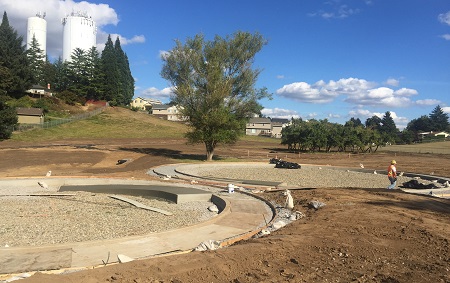Clark County park projects are built in accordance with the county's Parks, Recreation and Open Space Plan.
Recently developed parks in Clark County are part of the Greater Clark Parks District program, which voters in the unincorporated urban area outside the city of Vancouver approved in February 2005.
When creating the district, voters approved an ongoing property tax levy, primarily to maintain 35 new parks, along with additional sports fields and trails the county would build in the Greater Clark Parks District.
Since 2005, Clark County Public Works has completed 32 parks and 26 sports fields.
Greater Clark Parks District status map (PDF)
Page contents (click to jump to a section)
Park impact fees
Clark County primarily relies on park impact fees to pay for land acquisition and park development. Park impact fees are collected when housing is built. The greater Vancouver area is divided into 10 park districts, and park impact fees must be spent within the district in which they are collected.
The county collects two park impact fees, one for land acquisition and one for park development. Prior to 2014, these fees were deposited into separate accounts for each district. Since then, park impact fees are deposited into combined accounts for each district. Money from these combined accounts can be spent on either land acquisition or park development.
A park is developed when the county owns the land, has sufficient funds to pay for construction and park maintenance.
Camp Bonneville
Public Works also oversees the Camp Bonneville cleanup. The county ultimately intends to use a portion of the former U.S. Army post as a regional park.
Additional plans
Heritage Farm Sustainability Plan
Parks and Lands planning staff is developing a sustainability plan to improve financial sustainability of the farm and increase opportunities for public access. Plan development will include participation of a steering committee to help guide the process, implement a public engagement plan, and evaluate economic analysis of alternative approaches. The final sustainability plan will be considered by council for approval.
